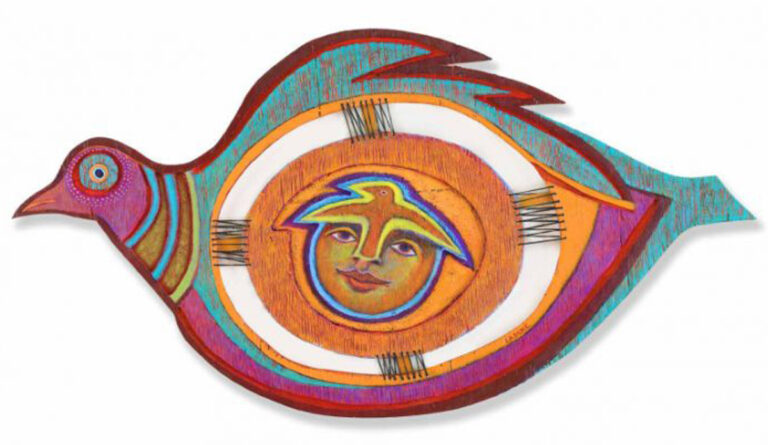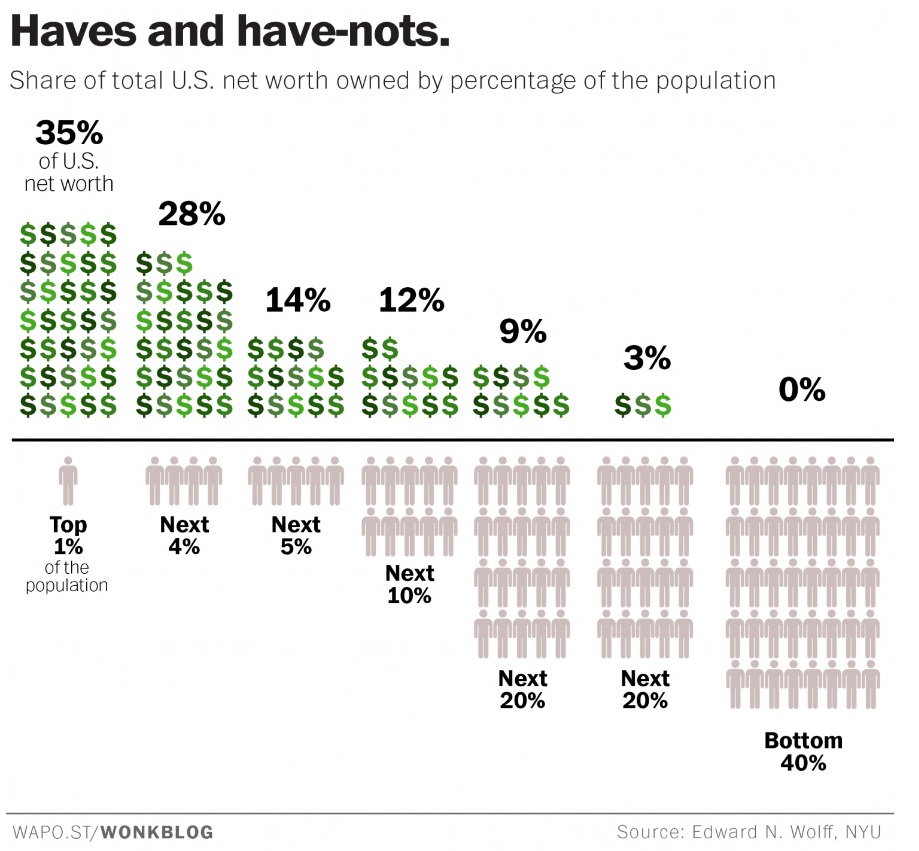So what is the ultimate point regarding extreme wealth inequality of a few people holding more power than the staggering majority? Beside the obvious wealth difference of “winners and losers,” human rights issues of exploitation and abuse abound when unfettered power prevails. Additionally, there is a very basic fact that the article noted makes plain: “data shows that more inequality equals less economic growth.” In plain words this means that the majority of people are in a race to the bottom where ultimately they do not have the means to buy from the holders of all the wealth – they are powerless, reduced to a master-servant relationship.
From article, “If you thought income inequality was bad, get a load of wealth inequality” https://www.washingtonpost.com/news/wonk/wp/2015/05/21/the-top-10-of-americans-own-76-of-the-stuff-and-its-dragging-our-economy-down/
“New York University economist Edward Wolff calculated exactly how the nation’s total wealth pie was sliced up among the population. And the figures are staggering. Check out the chart below.
Let’s imagine that there are just 100 people in the United States. The richest guy — and, yes, he’s probably a guy — owns more than one-third of the total wealth in this country. He’s got a third of all the property, a third of the stock market and a third of anything else that can be owned. Not bad.
The next-richest four people together own 28 percent of all the stuff. Divvied up four ways that’s still not too shabby. The next five people together own 14 percent of all the things, and the next 10 own another 12 percent.
We’ve accounted for just 20 percent of the people, but nearly 90 percent of the total wealth. Ninety percent! You can probably tell where this is going.
The next 20 percent of people have only nine percent of the wealth to split among them. Not great, but they’re still doing a lot better than the 60 percent of people below them. The next 20 percent — the middle wealth quintile — only have three percent of the wealth to split 20 ways.
Now we’ve reached the bottom 40 percent of Americans, but guess what? We’ve run out of stuff. Sorry guys, you get nothing. In fact, Wolff calculates that this bottom 40 percent actually has an overall negative net worth, which means that they owe more money than they own — and they probably owe that money to somebody in that top five or 10 percent.
You’re not necessarily living in squalor if you have a negative net worth. For instance, some student loans and a brand-new mortgage will probably put you in that category. But if you’ve got a bachelor’s degree, a job and a house to show for it, you’re probably doing okay.
But plenty of folks will be stuck in that bottom 40 percent category forever. And as the OECD report points out, this is a big problem for everyone — even the top one percent. Their data shows that more inequality equals less economic growth.”



